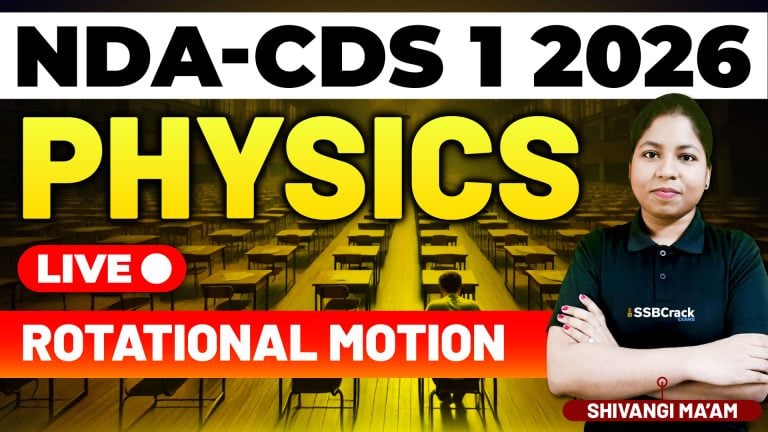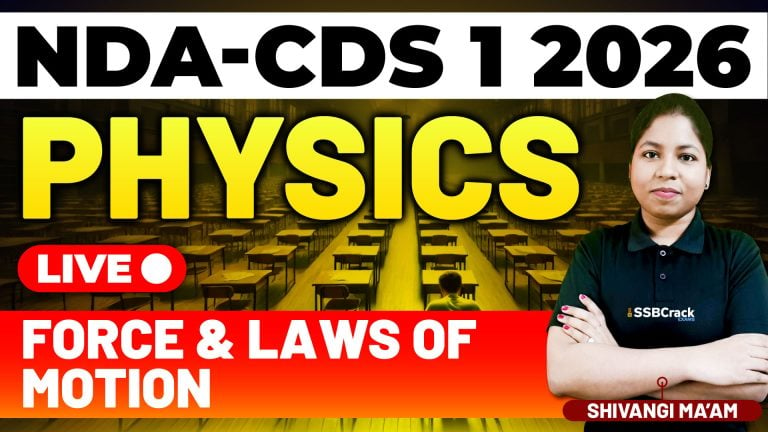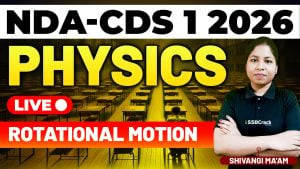In a recent class conducted for the National Defence Academy and Naval Academy (NDA-NA) Exam – Paper I – Maths, the topic of Analytical Geometry – 2D was discussed, with a specific focus on Straight Lines. This topic is fundamental for students preparing for the NDA-NA exam, as it tests their understanding of geometry in two dimensions, and straight lines form a core part of this section.
The session was aimed at understanding various aspects of straight lines, including their slope, different forms of their equations, the angle between two straight lines, and the concept of distances—whether it be from a point to a line or between two parallel lines. Let’s walk through the key takeaways from this class and explore how to effectively prepare for this topic.
Overview of the Class: Straight Lines
Straight lines are one of the most significant elements in the study of geometry. During the class, the instructor provided a comprehensive explanation of this topic, with practical examples and the solving of multiple-choice questions (MCQs) related to straight lines from previous NDA-NA exam papers. Here is a detailed breakdown of the subtopics covered:
1. Slope of a Straight Line
The slope of a straight line, often referred to as its gradient, indicates the steepness or inclination of the line. It was highlighted in the class that understanding the slope is fundamental, as it connects the geometric orientation of the line with its algebraic representation. The slope can be positive, negative, zero, or undefined depending on the orientation of the line. Students were guided through MCQs that required them to calculate and interpret the slope in various scenarios.
2. Different Forms of the Equation of a Straight Line
The class then moved on to discuss the various forms in which the equation of a straight line can be expressed. This is a crucial part of analytical geometry because different problems may require the use of different forms of equations. Some of the common forms covered include:
- Slope-intercept form
- Point-slope form
- Two-point form
- Intercept form
Each form provides a different way of representing the straight line based on the given information in the problem. The instructor solved multiple MCQs, explaining how to identify which form to use based on the conditions provided in the question.
3. Angle Between Two Straight Lines
The angle between two straight lines is an important concept that was thoroughly discussed during the class. This concept is useful in problems where two lines intersect or when you need to compare the orientation of two lines. The instructor explained how the angle between the lines depends on their slopes, and how to quickly determine whether the lines are parallel or perpendicular using basic geometric properties. Students solved MCQs that involved calculating the angle between given lines.
4. Distance Between a Point and a Straight Line
Another key concept discussed in the class was the distance between a point and a straight line. In analytical geometry, problems often require you to find the shortest distance from a specific point to a line, and this was a significant part of the class. The instructor showed how to approach such problems step-by-step, using the standard procedure to calculate the distance accurately. Several MCQs from past papers were solved to illustrate how this concept is frequently tested in the NDA-NA exam.
5. Distance Between Two Parallel Lines
The class concluded with a discussion on finding the distance between two parallel lines. Since parallel lines never meet, the distance between them remains constant. This concept is simpler compared to other distance problems, but it’s essential to grasp for solving related MCQs. Students practiced calculating this distance and were advised on how to identify parallel lines based on their equations.
Strategies for Preparing Straight Lines for NDA-NA Exam
With straight lines being a key topic in Analytical Geometry, here are some strategies that can help you prepare effectively:
1. Understand the Basics First
Before jumping into complex problems, ensure that you have a strong understanding of the basic properties of straight lines. Focus on concepts such as the slope, different forms of the equation, and how these relate to the geometry of the line. Understanding these basics will make it easier to approach more challenging questions.
2. Memorize Key Forms and Their Applications
In the NDA-NA exam, different types of problems will require the use of different forms of the equation of a straight line. Memorize the key forms and understand in which situations to use each. For example, the slope-intercept form is useful when you know the slope and y-intercept, while the two-point form is essential when you’re given two points on the line.
Practicing MCQs from previous years will help you recognize patterns and become familiar with which form of the equation to use based on the given data.
3. Practice Angle and Distance Problems Regularly
Problems involving the angle between lines and distances (either between a point and a line or between parallel lines) are common in the NDA-NA exam. These questions often require both analytical and geometric reasoning. To tackle these problems efficiently, practice regularly and develop a step-by-step approach for calculating angles and distances.
4. Solve Previous Years’ MCQs
Solving MCQs from previous years’ NDA-NA exams is one of the best ways to prepare. It helps you get a feel of the exam pattern, and you’ll understand how frequently different subtopics like slope, forms of equations, and distance calculations are tested. Focus on solving a wide variety of questions, including both simple and complex problems, to build confidence in this topic.
5. Time Management During Practice
Analytical geometry problems, especially those involving straight lines, can sometimes be time-consuming if you don’t have a structured approach. During your practice sessions, time yourself while solving MCQs. This will help you improve your speed and accuracy, which is crucial during the actual NDA-NA exam.
6. Revision is Key
Given the variety of forms and methods involved in solving straight-line problems, regular revision is important. Go over the basic concepts and forms frequently so that they are fresh in your mind on exam day. You can also create flashcards for quick revision of different forms of straight line equations, angle between lines, and distance formulas.
Conclusion
The recent class on Analytical Geometry – 2D focusing on Straight Lines provided valuable insights into solving MCQs related to this crucial topic in the NDA-NA exam. The session emphasized the importance of understanding the slope, different forms of equations, and the concept of angles and distances in two dimensions.
To prepare effectively for this topic, it’s essential to build a strong foundation by mastering the basics, practicing a variety of problems, and regularly revising key concepts. By solving previous years’ papers and timing your practice sessions, you can improve your speed and accuracy, both of which are crucial for success in the NDA-NA exam.



















